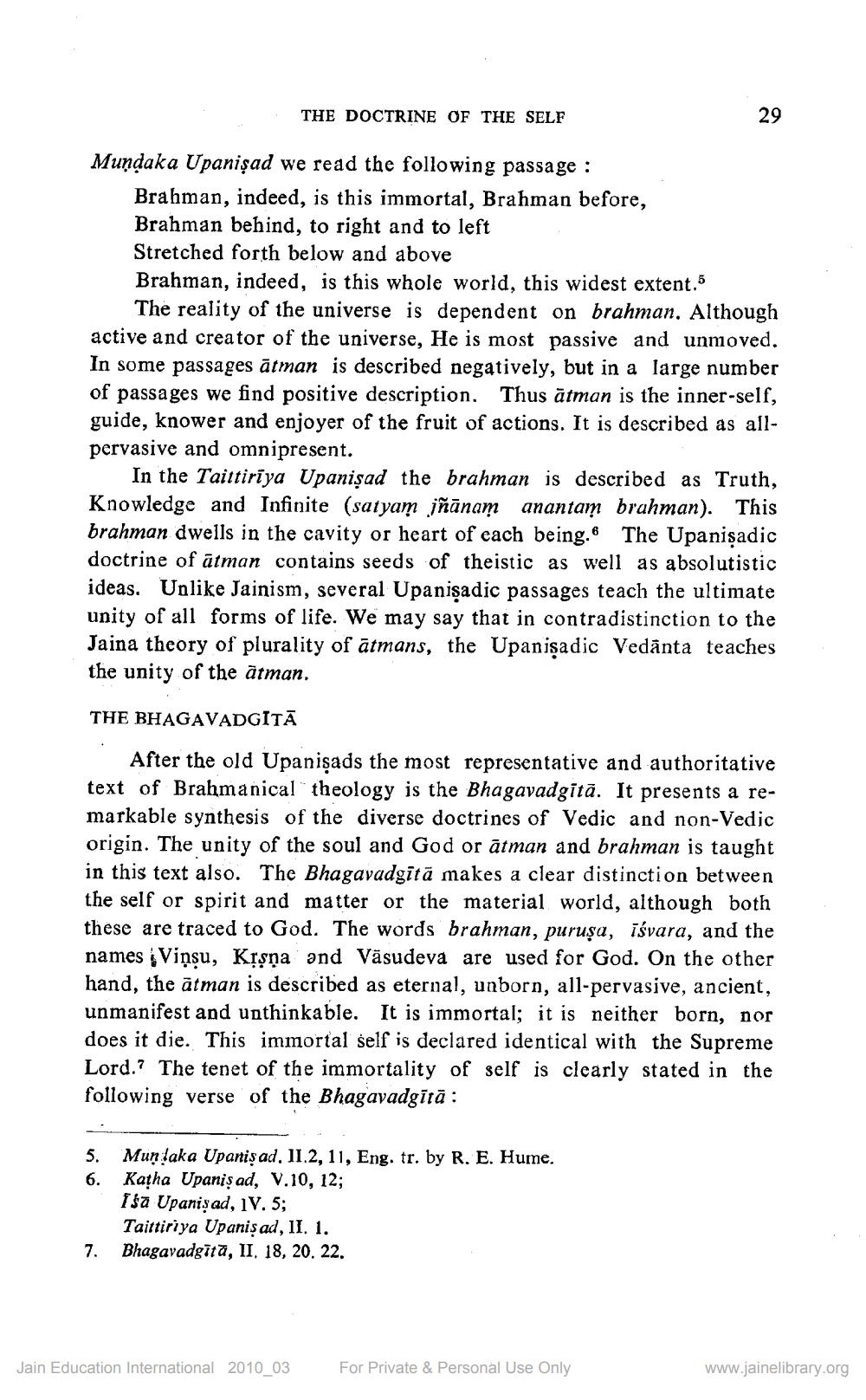________________
THE DOCTRINE OF THE SELF
29
Mundaka Upanişad we read the following passage :
Brahman, indeed, is this immortal, Brahman before, Brahman behind, to right and to left Stretched forth below and above Brahman, indeed, is this whole world, this widest extent.5
The reality of the universe is dependent on brahman. Although active and creator of the universe, He is most passive and unmoved. In some passages ātman is described negatively, but in a large number of passages we find positive description. Thus ātman is the inner-self, guide, knower and enjoyer of the fruit of actions. It is described as allpervasive and omnipresent.
In the Taittirīya Upanişad the brahman is described as Truth, Knowledge and Infinite (satyam jñānam anantam brahman). This brahman dwells in the cavity or heart of each being. The Upanișadic doctrine of ātman contains seeds of theistic as well as absolutistic ideas. Unlike Jainism, several Upanişadic passages teach the ultimate unity of all forms of life. We may say that in contradistinction to the Jaina theory of plurality of ātmans, the Upanișadic Vedānta teaches the unity of the ātman,
THE BHAGAVADGITĀ
After the old Upanisads the most representative and authoritative text of Brahmanical theology is the Bhagavadgitā. It presents a remarkable synthesis of the diverse doctrines of Vedic and non-Vedic origin. The unity of the soul and God or ātman and brahman is taught in this text also. The Bhagavadgitā makes a clear distinction between the self or spirit and matter or the material world, although both these are traced to God. The words brahman, puruşa, īśvara, and the names Viņsu, Krsna and Väsudeva are used for God. On the other hand, the ātman is described as eternal, unborn, all-pervasive, ancient, unmanifest and unthinkable. It is immortal; it is neither born, nor does it die. This immortal self is declared identical with the Supreme Lord.? The tenet of the immortality of self is clearly stated in the following verse of the Bhagavadgītā:
5. Mun laka Upanişad. II.2, 11, Eng. tr. by R. E. Hume. 6. Katha Upanişad, V.10, 12;
Isa Upanişad, IV. 5;
Taittiriya Upanişad, 11. 1. 7. Bhagavadgita, II. 18, 20. 22.
Jain Education International 2010_03
For Private & Personal Use Only
www.jainelibrary.org




